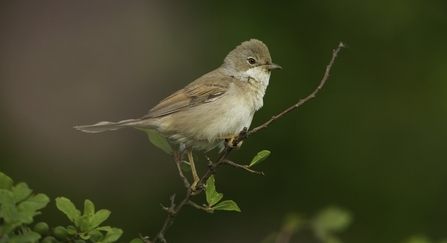What is it?
Cover crops are grown to protect and improve areas on the farm between regular crop production (usually autumn/winter). These areas can include soil fertility and structure, managing pests and weeds or environmental improvement. Catch crops are a fast-growing crop that can be grown between successive main crops to provide soil cover, organic matter, rooting structure and sometimes livestock grazing (usually 6-10 weeks during late summer). Green manure is provided by cover and catch crops (and sometimes living mulches) as green organic material that is then incorporated back into the soil to increase soil organic matter.
Benefits for farmers:
- Covering the soil helps to decrease soil erosion and nutrient leaching and run off.
- Using a diverse cover/catch crop increase root structure diversity in the soils.
- Using certain cover crop and crop rotation cycles can disturb weed and disease problems.
- Can be used for additional grazing.
Benefits for wildlife:
- All cover and catch crops provide some environmental benefits through the protection of soil and the provision of habitats. Some, such as winter bird seed mixes and pollinator mixes, can be especially beneficial, providing food and shelter for a huge range of species.
- Cover crops, in particular, provide much needed overwintering habitat and food for birds, small mammals and insects.
- Improves water quality in local waterways and ponds by reducing run-off.
Points to consider:
- Sometimes improvements in yield can only be seen after a few cycles of cover crop inclusion in your system.
- How to destroy your cover crop is a difficult decision. Currently the two main methods are ploughing or use of herbicides (neither of which are good for the environment), however research is being progressed to find alternatives. Usually the benefits, both environmentally and to your soil and crop health, outweigh the negative effects of destruction processes but this should be determined on a case-by-case basis.
- Selecting which cover crop to use before your following crop is vital to prevent pest or disease problems.
Useful resources:

Andrew Parkinson/2020VISION
